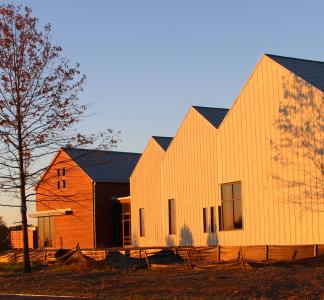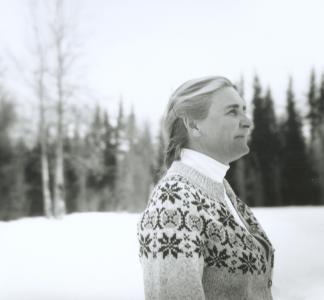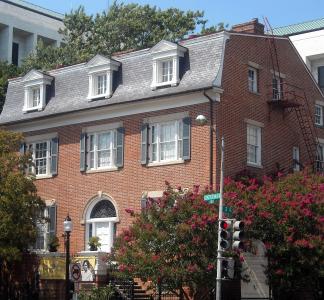8 parks and historic sites that preserve women’s history in the U.S.
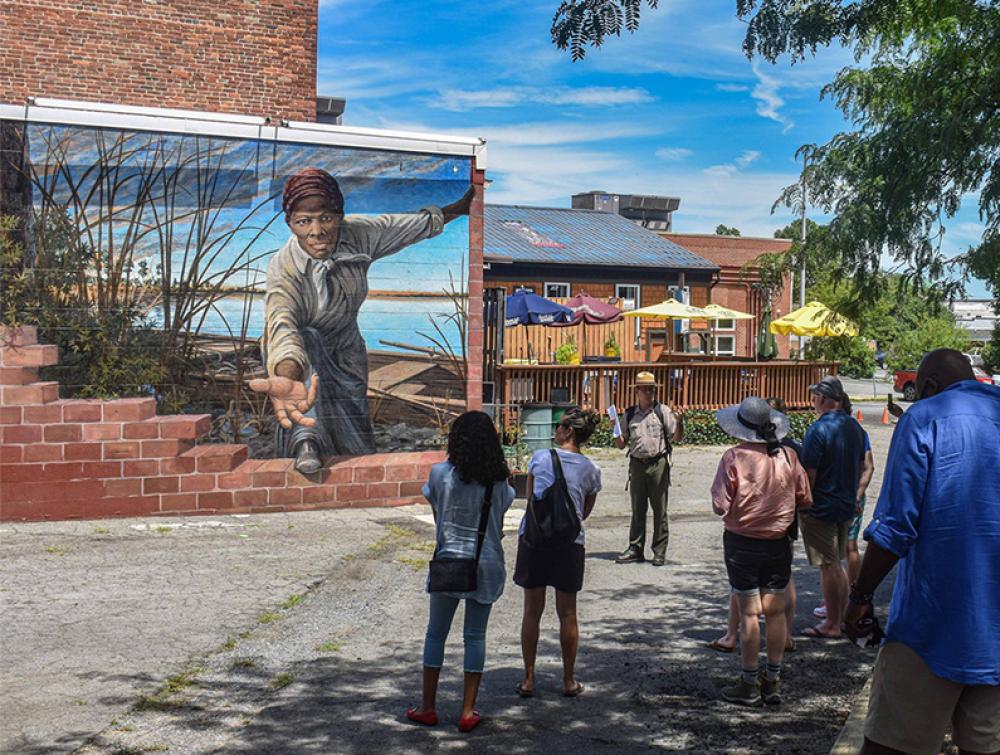
A ranger gives a talk in front of the Harriet Tubman Mural in downtown Cambridge, MD
NPS
Harriet Tubman, Marjory Stoneman Douglas and others honored across U.S.
In recent years, there's been a lot of scrutiny about the people and deeds we honor and memorialize in public spaces. That has included long overdue efforts to remove statues of Confederate generals, scrub racist place names, and more. One area where we still have a lot of work to do is to ensure women's stories are being widely and accurately told in our national monuments, historic sites, museums and classrooms. As a woman, this lack of recognition makes me think women’s history is still seen as not important.
According to one shocking report, only 6 percent of American monuments depict non-fictional women. There are more statues of mermaids (22) than Harriet Tubman (21). Most statues are dedicated to white men, with no US-born Latinx, Asian, Pacific Islander, or self-identified LGBTQ+ people on the list.
Obviously, women have made innumerable contributions in every field, but more of their stories should be widely told. For example, women have been leaders in the environmental conservation field and helped drive the 20th-century conservation movement, yet men have overshadowed their work. This gender gap extends to schools' curricula as well. One study found that K-12 schools taught students about the historical contributions of three men for every one woman. It also found that the women mentioned were primarily white (62 percent) and that education standards tend to emphasize women in domestic roles.
To tell a more equitable and fairer story of the U.S., we need to talk about women while amplifying and celebrating their critical work - past and present. And those stories must include Black and Brown, trans, LGBTQ, Indigenous and other women who have been left out of certain narratives and have often been barred from transformative moments and movements in U.S. history, including the women’s suffrage movement.
Below you'll find some of the few public lands that preserve and commemorate women's remarkable legacies and lasting contributions.
Harriet Tubman NHP and Harriet Tubman Underground Railroad NHP
Harriet Tubman escaped slavery and became known as the "conductor" of the Underground Railroad, risking her life to bring other enslaved people to freedom. The National Park Service manages two sites dedicated to preserving and sharing Tubman's life story and legacy.
Harriet Tubman National Historical Park is comprised of the Thompson African Methodist Episcopal Zion Church, where Tubman was a congregant near the end of her life; the Harriet Tubman Home for the Aged, a home for the poor and elderly Black folks and a place she lived in until she died in 1913; and the Harriet Tubman Residence, her home from 1859 through 1913.
Harriet Tubman Underground Railroad National Historical Park, in Maryland, includes the place she was born as an enslaved child and Underground Railroad routes in Dorchester, Talbot and Caroline counties on Maryland's Eastern Shore. The park is located at the heart of the 125-mile Tubman Byway, a self-guided driving tour through lands that preserve the places where Tubman lived and then fled from.
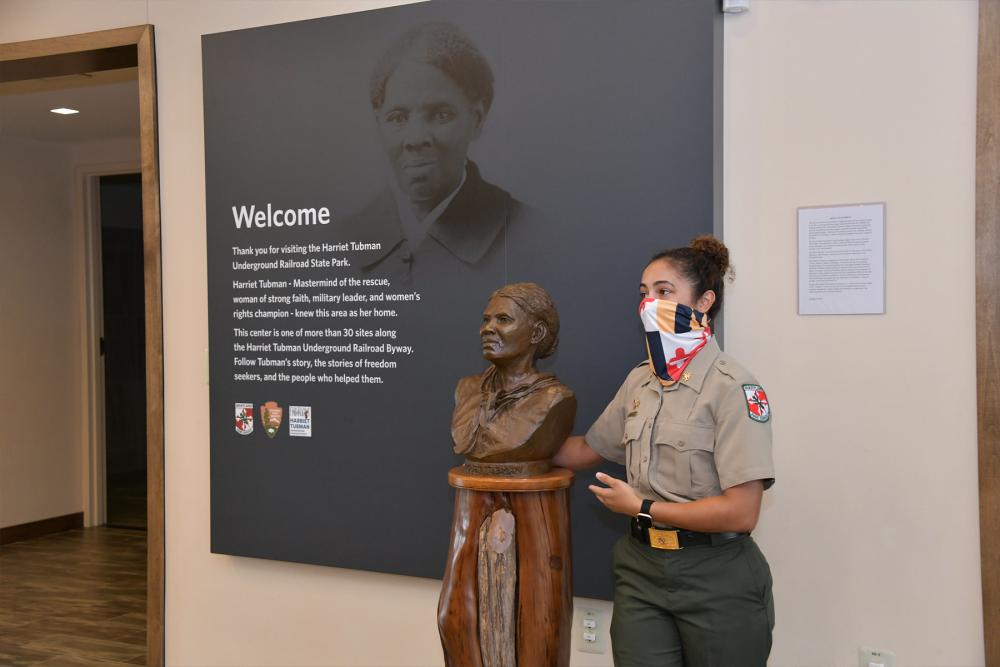
Park ranger gives a tour at Harriet Tubman Underground Railroad National Historical Park
Joe Andrucyk, Office of the Maryland Governor
Everglades National Park
Called the "Defender of the Everglades" by some, Marjory Stoneman Douglas was an environmental activist and author of the iconic book 'The Everglades: River of Grass in 1947,' where she explained why the Everglades' source of free-flowing fresh water is essential to Florida.
Fully encompassed within the park is the Marjory Stoneman Douglas Wilderness. The wilderness makes up most of the park, roughly 1.3 million acres. It has been designated as an International Biosphere Reserve, a World Heritage Site and a Ramsar Wetland of International Importance.
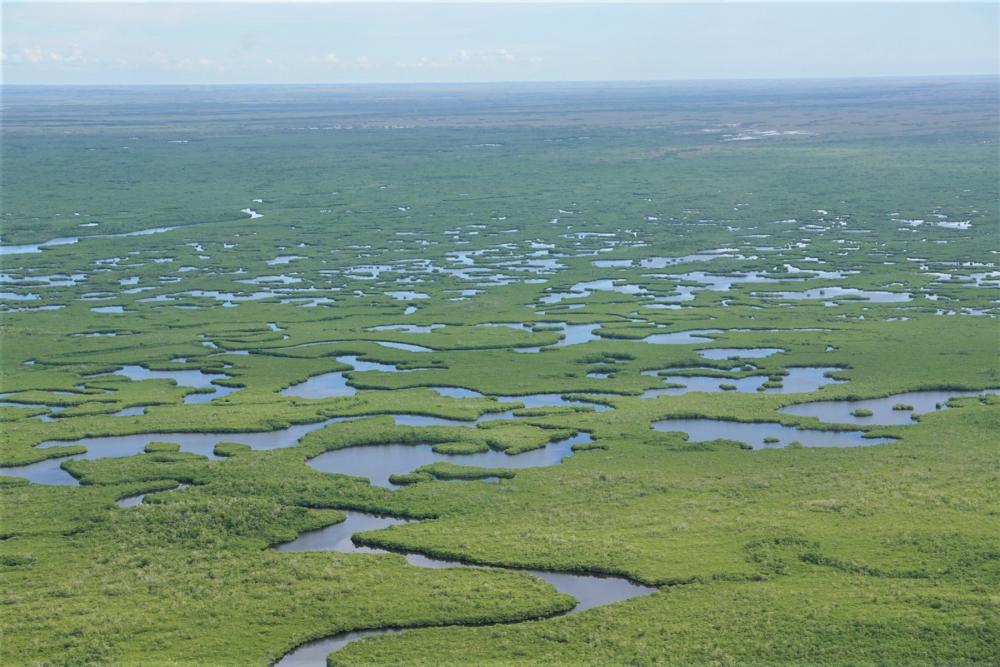
Aerial view of Marjory Stoneman Douglas Wilderness
Denise Diaz/NPS
Mary McLeod Bethune Council House National Historic Site
Mary McLeod Bethune was an educator, civil rights champion and presidential advisor who fought most of her life for racial and gender equality. Among many other things, Bethune founded the National Council of Negro Women in 1935 to empower and advocate for Black women.
The first national headquarters of the NCNW, and Bethune's last residence in D.C., is now a site managed by the National Park Service. The Mary McLeod Bethune Council House National Historic Site interprets and preserves Bethune's life and legacy and the countless contributions of Black women during the Civil Rights Movement and to this country.
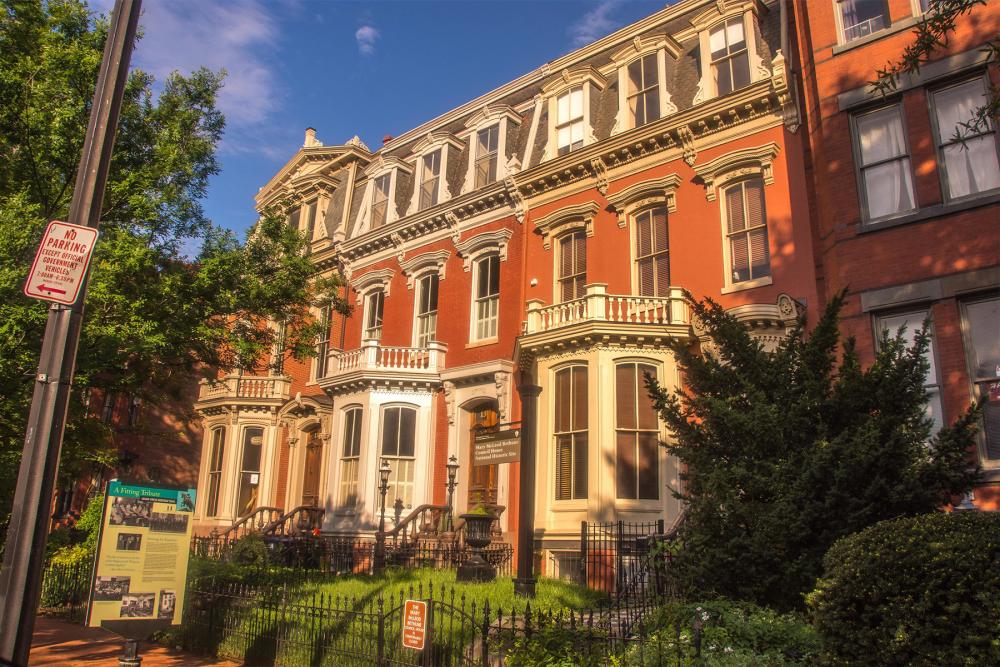
Exterior of Mary McLeod Bethune Council House National Historic Site
Wayne Hsieh/Flickr
Rachel Carson National Wildlife Refuge
In 1962, marine biologist and conservationist Rachel Carson wrote “Silent Spring,” a book many believe helped catalyze the global environmental movement. Carson outlined the dangers of chemical pesticides, which led to a ban on certain pesticides and the eventual creation of the Environmental Protection Agency (EPA).
Several places have been named after Carson, including the Rachel Carson National Wildlife Refuge in coastal Maine, which protects salt marshes and estuaries for migratory birds. Initially named Coastal Maine National Wildlife Refuge, the refuge was renamed in Carson’s honor in 1969.
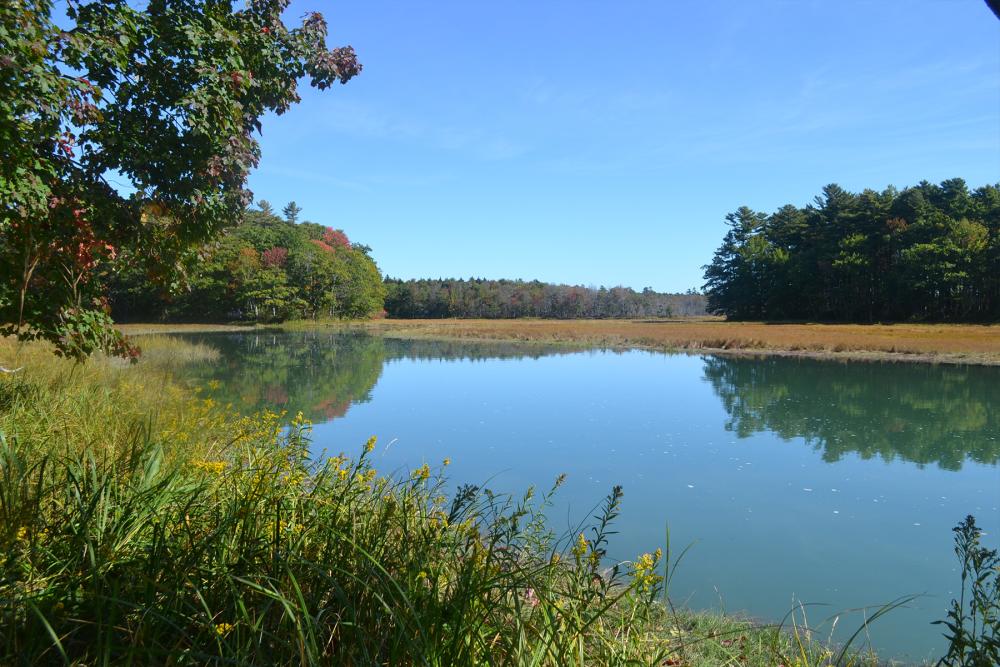
A placid river runs through Rachel Carson National Wildlife Refuge
Cindy Phillips/USFWS
Belmont-Paul Women’s Equality National Monument
Alva Belmont and Alice Paul were known suffragists. Both women fought for women’s right to vote and social, political and economic equality. Paul founded the National Women’s Party (NWP). At the same time, Belmont (a wealthy socialite) became the party’s primary benefactor. Paul and fellow suffragists also organized protests before the White House and became known as the ‘Silent Sentinels.’
Belmont-Paul Women’s Equality National Monument in Washington DC marks the former headquarters of the NWP. The monument commemorates the work and legacies of Paul and Belmont and the hundreds of women who fought for equal rights and full inclusion in American society.
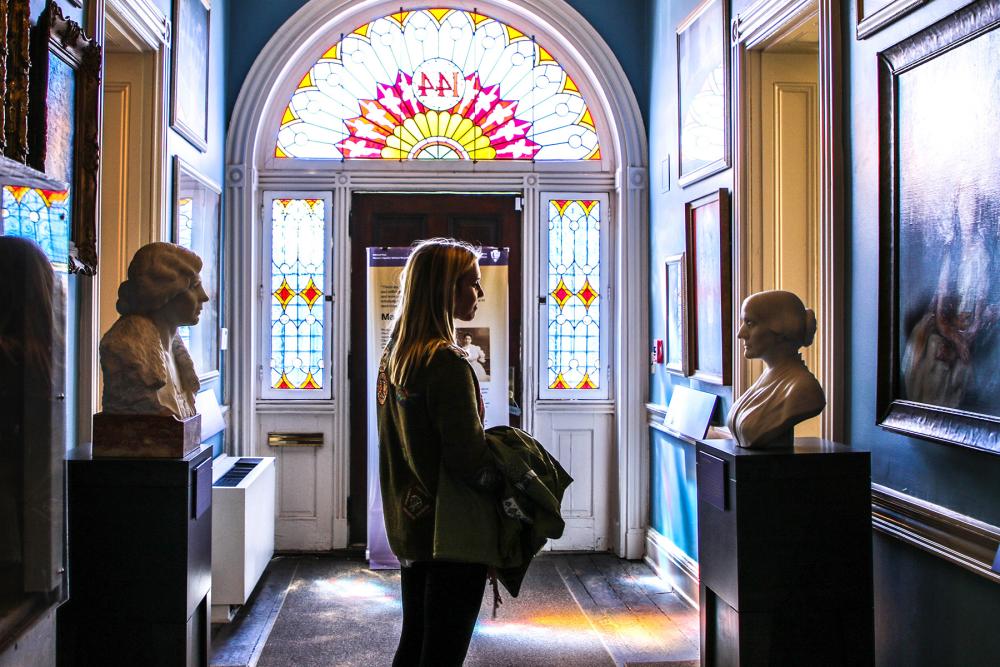
Visitor inside of Belmont-Paul Women’s Equality National Monument
Victoria Stauffenberg/NPS
César E. Chávez National Monument
When talking about the Farmworkers Movement, we must talk about Dolores Huerta, one of the most influential labor activists and the leader of the Chicano civil rights movement. She co-founded the National Farm Workers Association in 1962 (which later merged with another organization to become the United Farm Workers of America) with César E. Chávez, a farm worker and community organizer. In her nineties, Huerta continues to advocate for farm workers, the poor, women and children.
While César E. Chávez National Monument in California is named after Chávez, the park also honors the work and legacy of Huerta, who led strikes and lobbied lawmakers for higher wages and safer working conditions for farm workers. The monument is part of a property known as Nuestra Señora Reina de la Paz, the headquarters of the UFW.
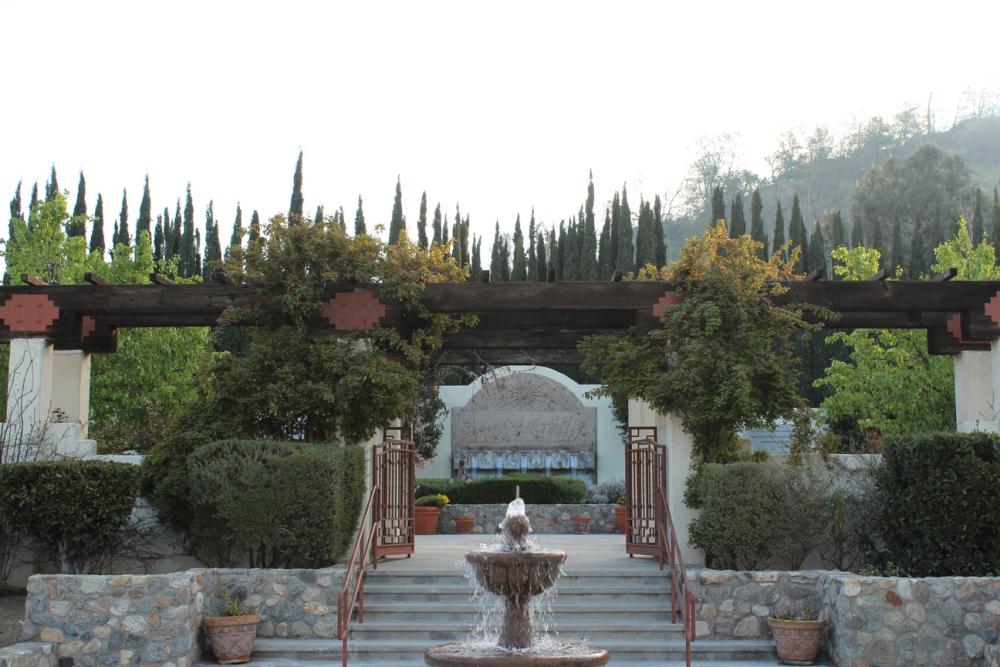
Fountain and Stairway Entrance to the Chavez Memorial Garden
E. Williams/NPS
Statue of Liberty
Writer and activist Emma Lazarus spoke out against antisemitism in the U.S. and the persecution of Jews in Europe and advocated for immigrants and refugees.
Lazarus wrote her famous sonnet “The New Colossus” in 1883 to raise money for construction of the Statue of Liberty’s pedestal. “The New Colossus” depicts the Statue of Liberty as a symbol of immigration and opportunity. Her work with refugees in New York and her Sephardic Jewish heritage inspired her. Years after Lazarus’ death, the words of the sonnet were engraved on a plaque on the pedestal of the Statue of Liberty, a national monument.
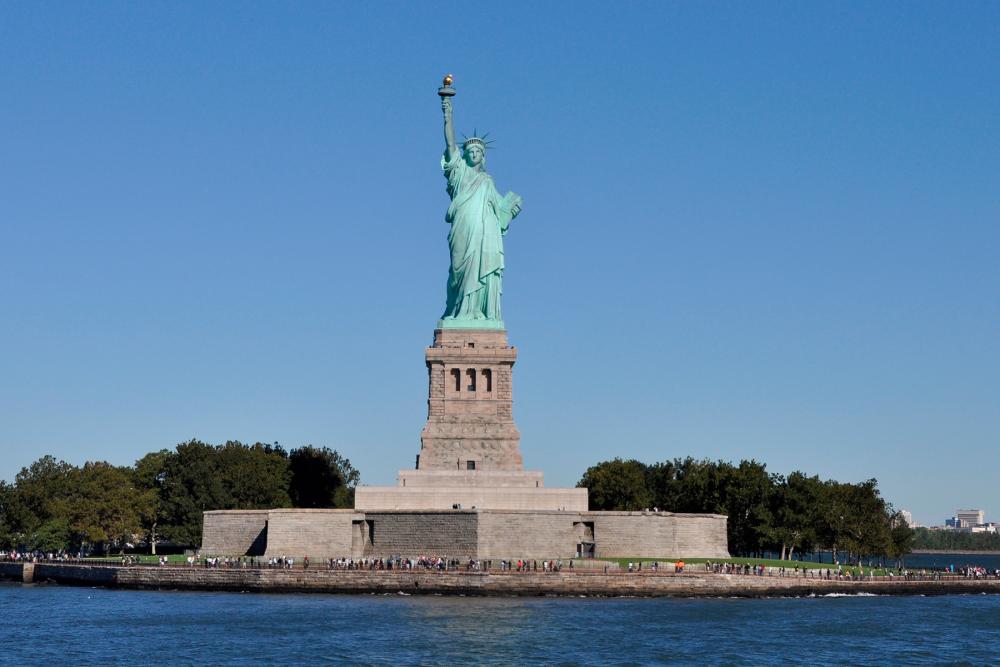
The Statue of Liberty on Liberty Island
NPS
